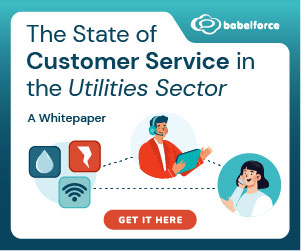Megan Haas of Interactions explains the difference between omnichannel, multi-channel and opti-channel in relation to customer contact.
In this day and age, with consumers more connected than ever, there is a big opportunity to leverage communication between brands and customers to drive business.
Specifically, brands should place great focus on channels, which can include voice, text, chat, smart speakers, and more.
When it comes to customer convenience, it’s important for companies to offer channels that will best support the customer and what they are trying to accomplish. But for every company and every customer and every issue, this could mean something different.
For example, a millennial customer may prefer to use online chat when she is tracking down a recent retail purchase, but if the package is delivered to the wrong address, she may want to use a voice channel to solve the issue more quickly.
Channel strategy in the contact centre is important as it can make or break the customer experience.
What is omnichannel? And how is it different from multi-channel?
If you’re in the customer contact space, you know that the past several years have been all about omnichannel. The ability to seamlessly transfer the context of a conversation from one channel to the next meant that customers were provided with a smooth and consistent customer experience.
Compared to multi-channel, where the channels are offered separately from one another and do not pass context between channels, omnichannel is a more cohesive approach.
With both of these methods, companies are focused on offering the most convenient and preferred channels for their customers.
With that, we saw the introduction of many business communication fronts not only across voice and email, but also through texting, online chat, and more recently smart speakers such as Google Home and Amazon Alexa.
But then came time for innovation…
Like all technology, omnichannel has became a mainstream capability that almost all companies are using.
Sure, it’s able to support the customer experience by allowing customers to pick up conversations where they left off, but it is creating a pattern of companies simply checking boxes instead of actually prioritizing and designing the customer journey to best support the customer.
It’s a war of the channels, and the company who has the most channels “wins”.
This, however, does not always correlate with what the customer wants. Customers like options, but they also like what they like.
In a opti-channel approach, companies use data, such as past channel choice and the task at hand, to offer the customer the channel that they would most prefer to use at that moment.
In other words, the most optimal channel is determined by data and offered for use.
Think about the craze of smart speakers. They are helpful to many people, and can be a convenient way to handle transactions.
However, if your target customers do not use smart speakers, then offering that channel is simply adding unnecessary distraction to the customer journey. Simplicity is key.
So, fewer channels are better?
Not exactly. Less may not always be more when it comes to communicating with customers. What’s most important is allowing customers to engage on the most convenient channel for them.
Businesses must have enough channels to support the methods of communication that their customers prefer. This means that the optimal channel number will vary greatly for every company.
The most important thing is that companies meet their customers where they are. It’s time to stop the channel war and offer channels that make the most sense for customers.
Not only will this save money by focusing on the channels that actually matter, but it will also streamline the communication process for customers, which will result in a much more simple, productive, and effortless experience.
Digital transformation is more than just about channel choice. It’s about channel optimization.
Author: Guest Author
Published On: 7th Nov 2019 - Last modified: 13th Nov 2019
Read more about - Guest Blogs, Interactions















